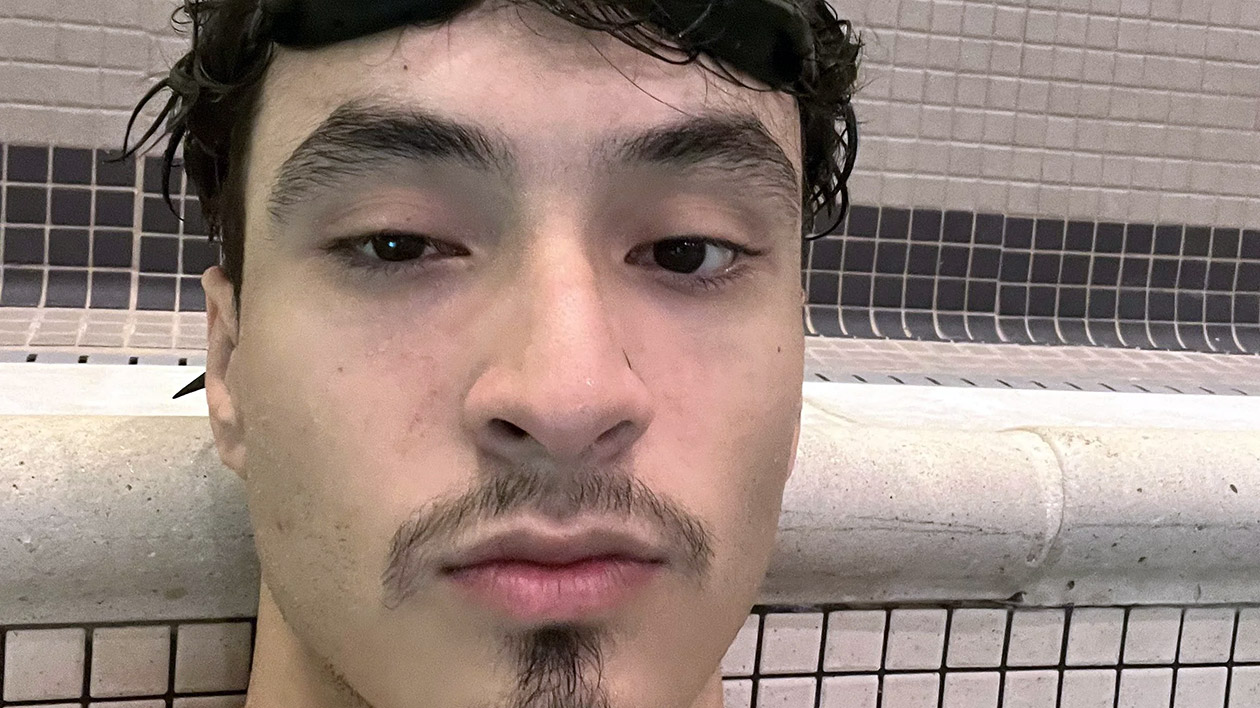What is lazy eye?
Amblyopia, commonly known as “lazy eye”, manifests when the visual acuity of one eye significantly surpasses that of the other, leading to a disparity in how the brain processes images from each eye. In the early stages of life, the neural pathways between the eye and brain develop rapidly, and if this process is disrupted, the result is often amblyopia. The brain, grappling with mismatched visual signals, may learn to ignore the input from the weaker eye, further exacerbating the condition. Though referred to colloquially as “lazy eye,” the term belies the complex neurological underpinnings of this vision development challenge.
What are the symptoms of Amblyopia?
Amblyopia, commonly known as lazy eye, can be difficult to detect in its early stages. However, there are several key symptoms to watch for:
- Eye misalignment: One eye may wander inward or outward, not working in coordination with the other eye.
- Vision problems: Poor depth perception and peripheral vision are common.
- Eye closure or squinting: The affected individual may frequently close one eye, squint, or rub their eyes.
- Head positioning: A persistent head turn or tilt when looking at objects.
- Visual difficulties: Problems with reading, writing, or drawing may be observed.
- Clumsiness: Difficulty catching or throwing objects, as well as frequent tripping or falling.
- Eye fatigue: Excessive blinking or eye rubbing.
- Attention issues: The child’s attention may wander during tasks requiring visual focus.
- Poor fine motor skills: Difficulty with tasks requiring hand-eye coordination, such as handwriting.
- Shutting or covering one eye: The child may habitually cover the weaker eye.
It’s important to note that many children with amblyopia may not notice any vision problems themselves. Regular eye exams are crucial for early detection and treatment, especially for children between the ages of 3 and 5.
What causes amblyopia (lazy eye)?
Amblyopia, commonly known as lazy eye, is a vision disorder that develops in early childhood due to abnormal visual development. There are several primary causes of amblyopia:
Muscle Imbalance (Strabismic Amblyopia)
The most common cause of lazy eye is an imbalance in the muscles that position the eyes, known as strabismus. This misalignment causes the eyes to cross in or turn out, preventing them from working together properly. As a result, the brain ignores input from the misaligned eye to avoid confusion, leading to a decrease in visual acuity in that eye.
Refractive Errors (Refractive Amblyopia)
A significant difference in the refractive error between the eyes can cause amblyopia. This may include:
- Substantial nearsightedness (myopia)
- Farsightedness (hyperopia)
- Astigmatism (uneven surface curve of the eye)
When there’s a large difference in visual acuity between the eyes, the brain becomes dependent on the eye with better vision and ignores input from the other eye, leading to amblyopia.
Visual Deprivation (Deprivation Amblyopia)
This type of amblyopia occurs when something obstructs light from entering the eye, preventing proper visual development. Causes of visual deprivation may include:
- Cataracts (cloudy lens)
- Droopy eyelid (ptosis)
- Corneal scars
Visual deprivation amblyopia is often considered the most severe type and requires urgent treatment to prevent permanent vision loss.
Other Contributing Factors
Several other factors can increase the risk of developing amblyopia:
- Premature birth or low birth weight
- Family history of amblyopia
- Developmental disabilities
- Vitamin A deficiency
- Eye trauma or surgery
It’s important to note that amblyopia develops when the brain receives weaker visual signals from one eye during early life. As a result, the brain starts to ignore input from that eye, leading to the “lazy eye” condition. Early diagnosis and treatment are crucial to prevent long-term vision problems, as the condition becomes more difficult to treat after age 7.

How is Amblyopia diagnosed in Australia?
Amblyopia is typically diagnosed through comprehensive eye examinations conducted by healthcare professionals. The diagnosis process involves several steps:
- Visual acuity test: This measures the clarity of vision in each eye, often using a Snellen eye chart or specialised devices for children.
- Refraction test: This determines if there are any refractive errors such as nearsightedness, farsightedness, or astigmatism.
- Ocular motility test: This checks if the eyes are aligned and working together properly.
- Pupillary red reflex test: For newborns, doctors use an ophthalmoscope to check for cataracts.
- Remote autorefraction or photo screening: These tests are used for toddlers to detect refractive errors.
Screening Programs
Australia has implemented vision screening programs to detect amblyopia early:
- Free Prep vision screening: Queensland offers this program for children starting school, aiming to detect conditions like amblyopia.
- StEPS (Statewide Eyesight Preschooler Screening): This program in New South Wales screens 4-year-old children in early childhood settings.
Timing and Frequency
- All children should have an eye test before starting preschool, typically between 3.5 and 5 years old.
- Most states and territories offer free vision screening programs through local child and family health services or schools.
Healthcare Professionals Involved
Amblyopia can be diagnosed by various healthcare professionals, including:
- General practitioners
- Community nurses
- Optometrists
- Ophthalmologists (specialist eye doctors)
Early diagnosis and treatment of amblyopia are crucial for better outcomes. If left untreated, it can cause permanent vision loss. Parents are encouraged to have their children’s eyes checked regularly and participate in available screening programs.
How do you treat Amblyopia?
Amblyopia treatment typically involves several approaches, depending on the cause and severity of the condition. The main goal is to strengthen the weaker eye and improve visual acuity. Here are the primary treatment methods:
Optical Correction
Correcting refractive errors is often the first step in treating amblyopia. This involves:
- Prescribing glasses or contact lenses to address nearsightedness, farsightedness, or astigmatism.
- In some cases, wearing the correct glasses alone can treat amblyopia.
Patching Therapy
This is a common and effective treatment, especially for children:
- An adhesive patch is placed over the stronger eye for several hours each day.
- The duration of patching depends on the severity of amblyopia, typically ranging from 2 to 6 hours per day.
- Patching forces the weaker eye to work harder, strengthening its connection with the brain.
Atropine Eye Drops
An alternative to patching, particularly useful when compliance with patching is difficult:
- Drops are applied to the stronger eye to temporarily blur its vision.
- This method forces the weaker eye to work harder, similar to patching.
- Daily use may not be necessary for noticeable improvement in moderate to severe amblyopia.
A comprehensive approach often used in combination with other treatments:
- Involves exercises to improve visual acuity, binocular vision, and visual processing abilities.
- May include activities to enhance accommodation, fixation, saccades, pursuits, and spatial skills.
Advanced Technologies
New treatment options are being developed and tested:
- Intermittent occlusion therapy (IO-therapy) using liquid crystal glasses that alternate between opaque and transparent states.
- Binocular treatments such as specialized video games and movies designed to train both eyes to work together.
Early diagnosis and treatment are crucial for the best outcomes, as amblyopia is most responsive to treatment in young children. However, some evidence suggests that even adults may benefit from treatment. Treatment choice depends on the individual case, and a combination of methods may be used for optimal results.
How common is Amblyopia in Australia?
Amblyopia prevalence in Australia varies slightly depending on the age group studied and the criteria used for diagnosis. Based on recent studies:
- In preschool children (ages 30 to 72 months), the prevalence of amblyopia is approximately 1.9% [1].
- For the general population, amblyopia affects about 2% of individuals.
In adult populations, the prevalence is slightly higher:
- A study of older adults in the Blue Mountains area found a prevalence of 3.06% for unilateral amblyopia [2].
- Another adult population study reported an amblyopia prevalence of 3.2% using a visual acuity criterion of 20/30 or less.
The prevalence of amblyopia in Australia is comparable to rates reported in other countries and recent studies. Early detection and treatment programs, such as vision screening for preschool and school-age children, may contribute to managing the condition effectively in the Australian population.
Can you drive if you have amblyopia?
Yes, people with amblyopia can generally drive if they meet certain visual requirements. The ability to drive with amblyopia depends on the severity of the condition and local regulations.
In Australia, individuals with amblyopia may be permitted to drive if:
- The unaffected eye has adequate visual acuity to meet the minimum standards for driving.
- There is no significant defect in the binocular field that encroaches within 20 degrees of fixation above or below the horizontal meridian.
- The person can read a number plate from 20 metres away on a clear day with their stronger eye.
It’s important to note that:
- Individuals with amblyopia may be less likely to acquire a driver’s license compared to those without the condition.
- Among licensed drivers, studies have not found evidence of increased crash risk for those with amblyopia.
- Some people with amblyopia may need to adapt their driving techniques, such as being more cautious when merging lanes or judging distances.
If you have amblyopia and are considering driving, it’s crucial to:
- Consult with an optometrist or ophthalmologist to assess your fitness to drive.
- Ensure you meet the visual standards require
- by your local licensing authority.
- Be aware of any limitations and adapt your driving accordingly.
Remember that driving regulations may vary, so it’s essential to check the specific requirements in your area.
[1] https://www.aaojournal.org/article/S0161-6420(11)00567-7/fulltext
BOOK AN APPOINTMENT TODAY
Tired of squinting and straining? Experience the comfort and clarity of healthy vision.
